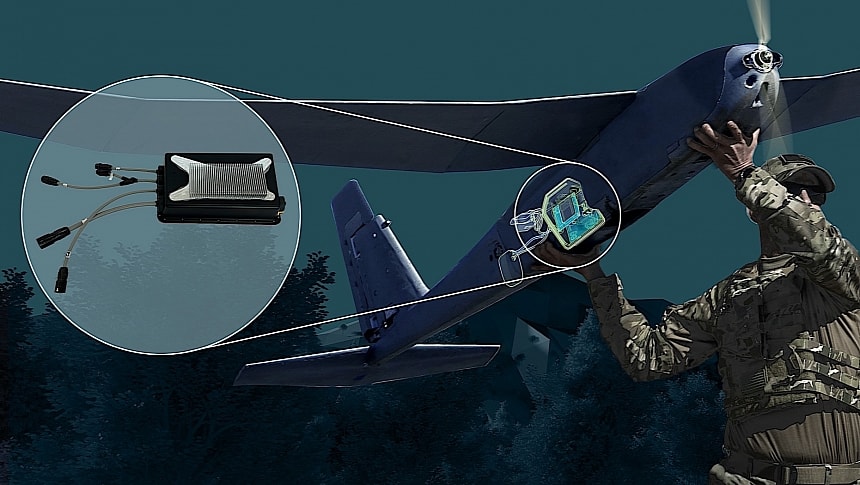Most of the drones currently being used by the militaries of the world still need a human operator to control them. From the small, first-person view (FPV) drones extensively used in Ukraine to the much larger ones deployed by the Americans for surveillance and strike purposes, these vehicles still rely very much on humans to do their thing. But there are ways of giving them more freedom, including through something called autonomy kits.
An autonomy kit basically comprises a set of hardware fittings and software that gives drones the ability to conduct some missions on their own after they've been instructed what to do in advance. There aren't so many of these kits around, so when we got word of a new one being launched, we immediately wanted to know more.
American defense contractor AeroVironment is one of the most prolific drone makers in the world. Its portfolio comprises small and medium aerial drones, loitering munition systems, and even ground drones. The company is so skilled at what it's doing that it was even involved in the development of the Ingenuity helicopter NASA sent to Mars together with the Perseverance rover.
Of interest to us today are the small drones AeroVironment calls Puma, because it is for them that an autonomy kit was devised, one that in the future could power other kinds of vehicles as well.
The company calls the system ARK, which is short for Autonomy Retrofit Kit, and it was designed to "increase the effectiveness of autonomous systems and reduce operator burdens." What that means is that it allows drones to be pre-programmed to perform missions fully autonomously, either alone or in packs. That comes in particularly handy in communications-contested environments, close to enemy lines.
ARK comes in the form of a payload that can be attached to the Puma drones and runs a software system called AVACORE. The suite comprises autopilots, radios and sensors that give the machines autonomous capabilities.
On top of that, the Pumas are gifted with computer vision that allows them to detect, classify, locate, and track objects of interest, be it people, vehicles, or aircraft, in both night and day conditions. ARK-equipped Pumas can be used to search, track, and follow any of these objects.
The AeroVironment Puma drones come in two variants, 3 AE and LE. In controlled mode, the former has a link range of up to 37 miles (60 km) and an operating time of up to three hours. It is used for intelligence, surveillance, and reconnaissance (ISR) and it is launched in a variety of ways, including by hand, bungee, rail, or vehicle. It can carry a payload of 15 pounds (seven kg).
The LE comes with the same range, but its operating time can go up to as much as 6.5 hours thanks to a more potent battery pack. It can be loaded with up to 5.5 pounds (2.5 kg) of payload and launches in the same way as the 3 AE.
American defense contractor AeroVironment is one of the most prolific drone makers in the world. Its portfolio comprises small and medium aerial drones, loitering munition systems, and even ground drones. The company is so skilled at what it's doing that it was even involved in the development of the Ingenuity helicopter NASA sent to Mars together with the Perseverance rover.
Of interest to us today are the small drones AeroVironment calls Puma, because it is for them that an autonomy kit was devised, one that in the future could power other kinds of vehicles as well.
The company calls the system ARK, which is short for Autonomy Retrofit Kit, and it was designed to "increase the effectiveness of autonomous systems and reduce operator burdens." What that means is that it allows drones to be pre-programmed to perform missions fully autonomously, either alone or in packs. That comes in particularly handy in communications-contested environments, close to enemy lines.
ARK comes in the form of a payload that can be attached to the Puma drones and runs a software system called AVACORE. The suite comprises autopilots, radios and sensors that give the machines autonomous capabilities.
On top of that, the Pumas are gifted with computer vision that allows them to detect, classify, locate, and track objects of interest, be it people, vehicles, or aircraft, in both night and day conditions. ARK-equipped Pumas can be used to search, track, and follow any of these objects.
The AeroVironment Puma drones come in two variants, 3 AE and LE. In controlled mode, the former has a link range of up to 37 miles (60 km) and an operating time of up to three hours. It is used for intelligence, surveillance, and reconnaissance (ISR) and it is launched in a variety of ways, including by hand, bungee, rail, or vehicle. It can carry a payload of 15 pounds (seven kg).
The LE comes with the same range, but its operating time can go up to as much as 6.5 hours thanks to a more potent battery pack. It can be loaded with up to 5.5 pounds (2.5 kg) of payload and launches in the same way as the 3 AE.











